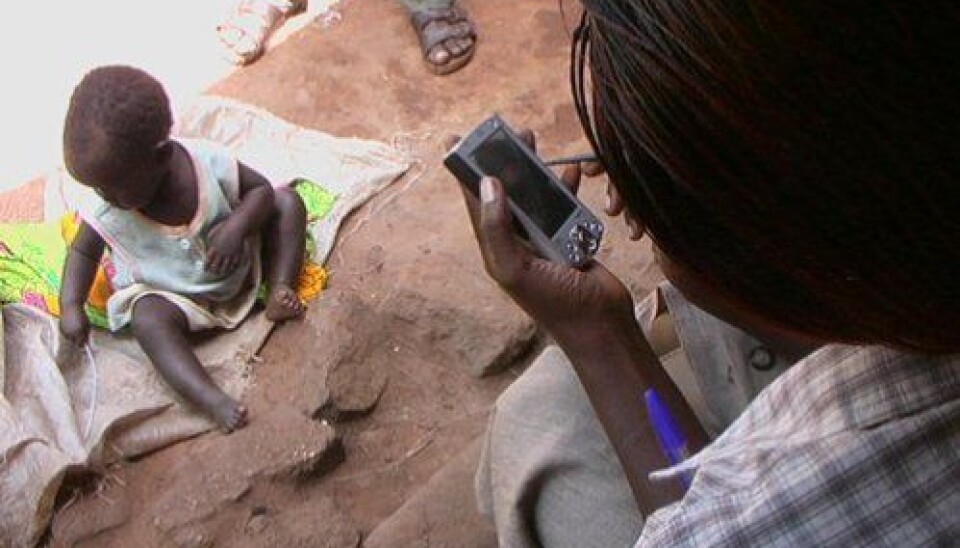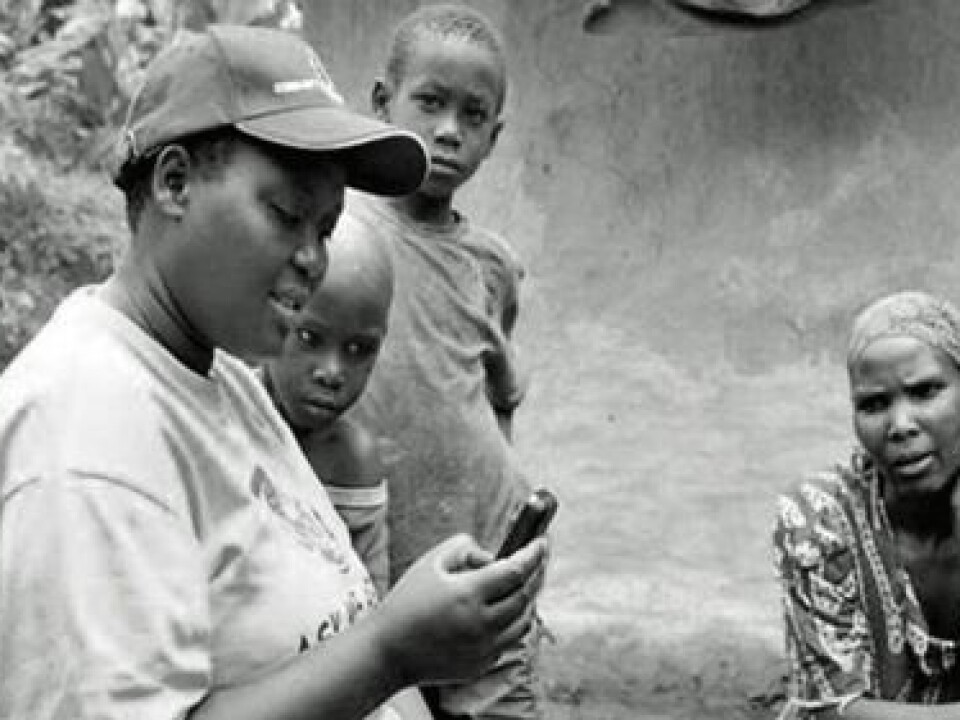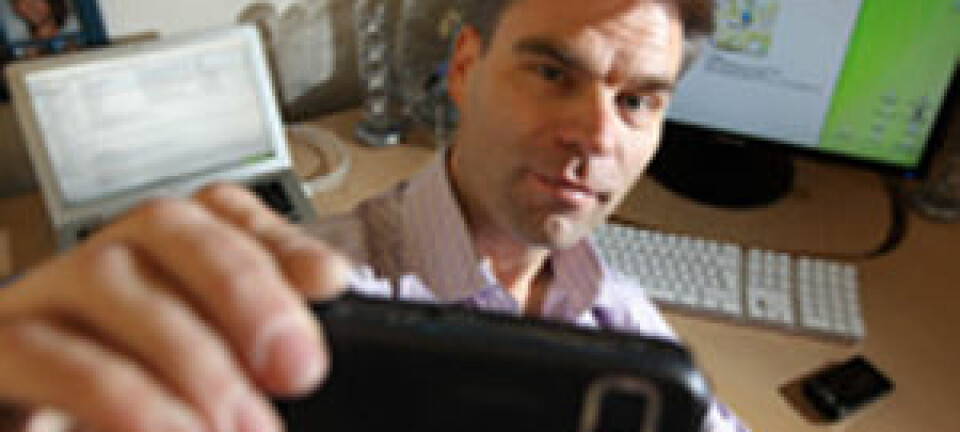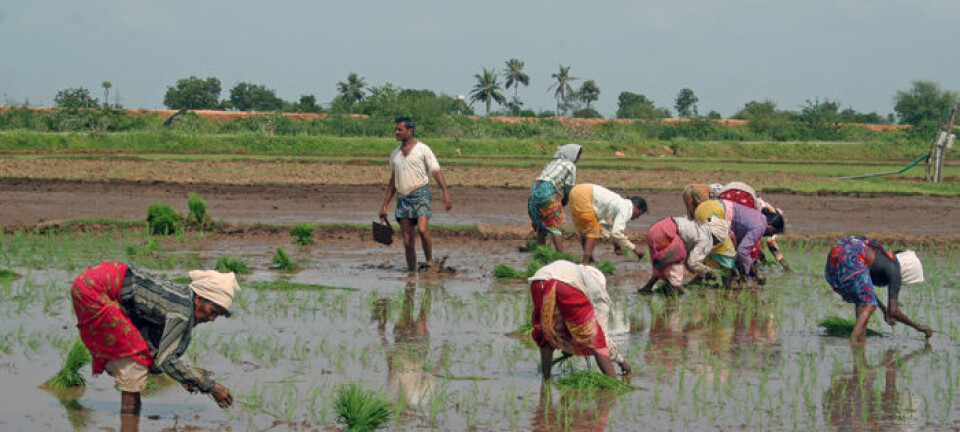This article was produced and financed by The Research Council of Norway

Mobile phones bring health to the poor
Pregnant women in rural Ghana get health advice via mobile phone. Mobile technology can improve the health of people in developing countries.
Denne artikkelen er over ti år gammel og kan inneholde utdatert informasjon.
There are many ways the mobile phone can be a tool for improving the health of the world’s poorest segment. Norwegian researchers are playing a key role in making it happen.
Mobile midwives replacing superstition
The Ghana project targets women who do not typically seek help from local health facilities during pregnancy or when giving birth. The expectant mothers receive weekly automated voice or SMS messages on how to promote healthy foetal development and other vital information about pregnancy and birth.
“All they need to receive these messages is an inexpensive mobile phone,” says Jacqueline Møller Larsen of the Grameen Foundation in Ghana.
The weekly messages, designed to be both relevant and entertaining, are meant to encourage expecting mothers in poor rural areas to overcome their reluctance to contact health care professionals. They also receive information on which vaccinations they should take and advice on nutrition.

The objective of the information texted to these pregnant women is to give them confidence in the health care system and to counterbalance advice they may hear that is based on superstition. The text messaging solution is now being tested on nearly 4 000 pregnant women in Ghana.
“We keep in close contact with the women to get their feedback on how the solution is working. The health information they receive in this way can make a real difference in the health of both mother and baby.”
Collecting health data from many countries
Health care professionals in more than 20 countries in Africa and Asia are now recording a variety of health-related data using computer software developed and coordinated by the University of Oslo. The system contains an overview of information such as births, spread of infectious diseases, and vaccination distribution.
“Health care professionals in several of these participating countries have begun implementing mobile phones in their practice, with good results,” says Professor Kristin Braa of the University of Oslo.

“Punjab, India, has 6 000 health care professionals working this way in villages. They do all their reporting via mobile phone and even store recordings of their training sessions on it. Many of them have found innovative uses for phones, such as taking photos of injuries and sending them to more qualified professionals in order to get treatment advice.”
New technology also presents challenges
Professor Braa points out that it can be challenging to introduce new technology to health care in developing countries.
“We see that many pilot projects are never continued to the next level, a larger-scale format,” she explains. “Some of the projects are isolated and thereby cause more fragmentation of public health data. In addition, they may require tools that are too costly for developing countries.”
Easier diagnosis
Dr Marc Mitchell of Harvard University is helping to develop clinical protocols designed for health care professionals in the developing world. Using a mobile phone, health care professionals can follow a set, programmed procedure to diagnose patients.
“We’ve found that physicians prefer following protocols on their mobile phone over a paper version,” says Dr Mitchell. “It’s simpler and can be done anywhere, and the chances of a correct diagnosis are better. Patients taking part in the project also feel better cared for, since the physician needs to take the time to get through the entire procedure.”
Recording vaccines via mobile
Mobile phones are also being used increasingly to record vaccination information. A key person in developing and testing this kind of technology has been the University of Bergen’s Thorkild Tylleskjær.
“The entry of incorrect information about vaccinations has been a problem, but we see an improvement when the recording is done via mobile phone,” says Professor Tylleskjær. “The technology we’ve developed can be used even where there is no mobile coverage or Internet access.”
“So far, the vaccination records have been written on paper, then delivered to a place where they can be entered in digital form. This traditional method is both time-consuming and unreliable.”
Professor Tylleskjær and his team of software developers in Uganda, Pakistan, India, South Africa, the US and Norway are developing an open software solution called openXdata to be used in connection with recording and distributing health data.
“It’s a solution that makes it possible to accumulate knowledge and share it with others very efficiently.”
Translated by: Darren McKellep/Carol B. Eckmann
































